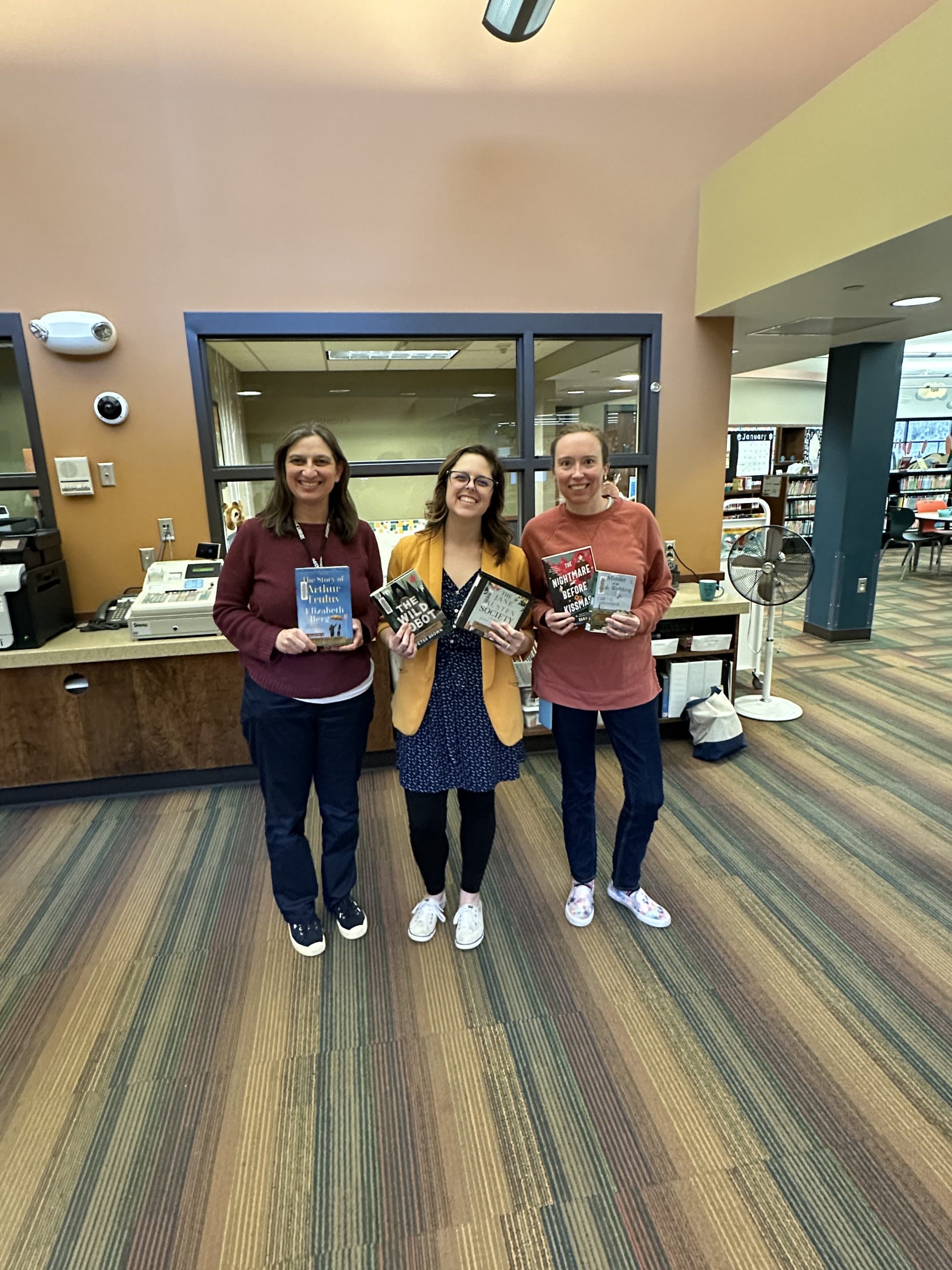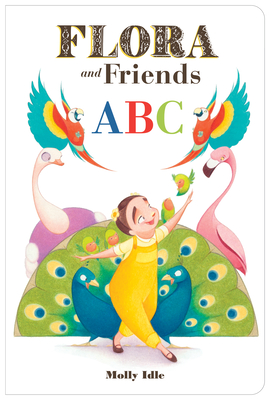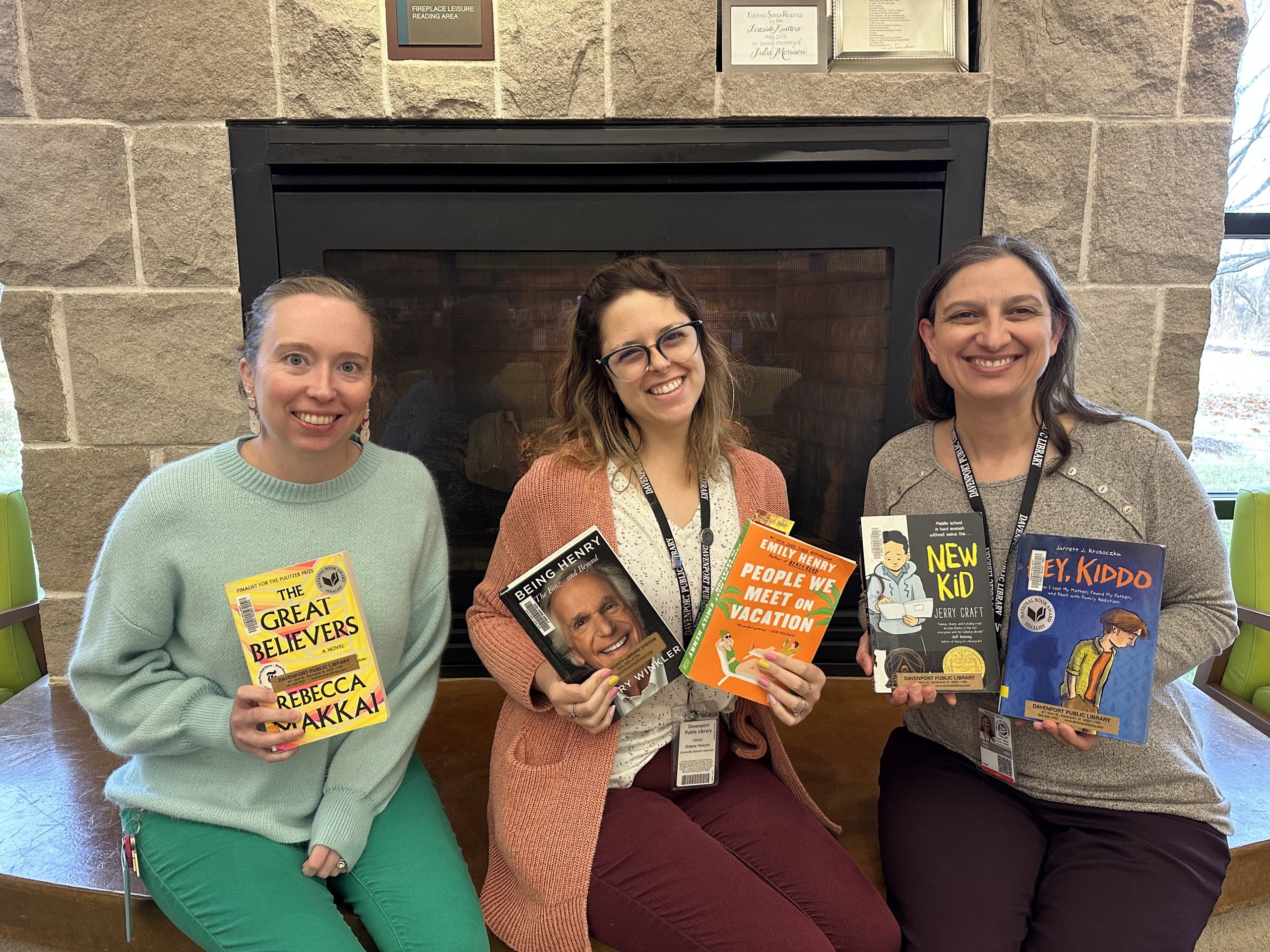 If you’re anxiously awaiting a copy of Great Big Beautiful Life by Emily Henry, you’re not alone! Henry’s latest was released on April 22nd, 2025 and was also selected as Reese’s Book Club pick for May 2025, driving up the popularity. We have gathered a list of readalikes to tide you over until you can get a copy of Great Big Beautiful Life.
If you’re anxiously awaiting a copy of Great Big Beautiful Life by Emily Henry, you’re not alone! Henry’s latest was released on April 22nd, 2025 and was also selected as Reese’s Book Club pick for May 2025, driving up the popularity. We have gathered a list of readalikes to tide you over until you can get a copy of Great Big Beautiful Life.
Curious what Great Big Beautiful Life is about? Check out the description below.
Alice Scott is an eternal optimist still dreaming of her big writing break. Hayden Anderson is a Pulitzer-prize winning human thundercloud. And they’re both on balmy Little Crescent Island for the same reason: to write the biography of a woman no one has seen in years—or at least to meet with the octogenarian who claims to be the Margaret Ives. Tragic heiress, former tabloid princess, and daughter of one of the most storied (and scandalous) families of the twentieth century.
When Margaret invites them both for a one-month trial period, after which she’ll choose the person who’ll tell her story, there are three things keeping Alice’s head in the game.
One: Alice genuinely likes people, which means people usually like Alice—and she has a whole month to win the legendary woman over.
Two: She’s ready for this job and the chance to impress her perennially unimpressed family with a Serious Publication.
Three: Hayden Anderson, who should have no reason to be concerned about losing this book, is glowering at her in a shaken-to-the core way that suggests he sees her as competition.
But the problem is, Margaret is only giving each of them pieces of her story. Pieces they can’t swap to put together because of an ironclad NDA and an inconvenient yearning pulsing between them every time they’re in the same room.
And it’s becoming abundantly clear that their story—just like the tale Margaret’s spinning—could be a mystery, tragedy, or love ballad . . . depending on who’s telling it. – Berkley
If that description has piqued your interest but you don’t want to wait, try any of the below! The books below are all first in series or standalone titles that were published in 2025. As of this writing, all titles are owned by the Davenport Public Library. Descriptions are provided by the publishers.
 Any Trope But You by Victoria Lavine
Any Trope But You by Victoria Lavine
Beloved romance author Margot Bradley has a dark secret: she doesn’t believe in Happily Ever Afters. Not for herself, not for her readers, and not even for her characters, for whom she secretly writes alternate endings that swap weddings and babies for divorce papers and the occasional slashed tire. When her Happily Never After document is hacked and released to the public, she finds herself canceled by her readers and dropped by her publisher.
Desperate to find a way to continue supporting her chronically ill sister, Savannah, Margot decides to trade meet-cutes for murder. The fictional kind. Probably. But when Savannah books Margot a six-week stay in a remote Alaskan resort to pen her first murder mystery, Margot finds herself running from a moose and leaping into the arms of the handsome proprietor, making her fear she’s just landed in a romance novel instead.
The last thing Dr. Forrest Wakefield ever expected was to leave his dream job as a cancer researcher to become a glorified bellhop. What he’s really doing at his family’s resort is caring for his stubborn, ailing father, and his puzzle-loving mind is slowly freezing over—until Margot shows up. But Forrest doesn’t have any room in his life for another person he could lose, especially one with a checkout date.
As long snowy nights and one unlikely trope after another draw Margot and Forrest together, they’ll each have to learn to overcome their fears and set their aside assumptions before Margot leaves—or risk becoming a Happily Never After story themselves. – Atria Books
 First-Time Caller by B.K. Borison (book 1 in Heartstrings series)
First-Time Caller by B.K. Borison (book 1 in Heartstrings series)
Aiden Valentine has a secret: he’s fallen out of love with love. And as the host of Baltimore’s romance hotline, that’s a bit of a problem. But when a young girl calls in to the station asking for dating advice for her mom, the interview goes viral, thrusting Aiden and Heartstrings into the limelight.
Lucie Stone thought she was doing just fine. She has a good job; an incredible family; and a smart, slightly devious kid. But when all of Baltimore is suddenly scrutinizing her love life—or lack thereof—she begins to question if she’s as happy as she believed. Maybe a little more romance wouldn’t be such a bad thing.
Everyone wants Lucie to find her happy ending…even the handsome, temperamental man calling the shots. But when sparks start to fly behind the scenes, Lucie must make the final decision between the radio-sponsored happily ever after or the man in the headphones next to her. – Berkley
 Flirting with Disaster by Naina Kumar
Flirting with Disaster by Naina Kumar
It’s been years since Meena separated from her husband, Nikhil . . . years since they first laid eyes on each other in their home state of Texas, years since they spontaneously wed in Las Vegas and she felt true happiness. Now a high-powered lawyer on Capitol Hill and ready to move on (at least, she thinks so) with another successful lawyer, Shake, Meena has returned to Texas. This time, finally to obtain a divorce.
But there’s one thing Meena didn’t account for: a hurricane forming in the Gulf, veering right toward them and giving them no choice but to hunker down in the home they had built together. Suddenly, she finds herself trapped amid gale-force winds and pelting rain with the man she once loved.
As they spend more time together, Meena begins to remember everything that drew her to Nikhil: his small-town charm, his thoughtful nature . . . his absurdly good looks. But being with Shake makes sense to her. He’s steady, ambitious, and wants exactly what she wants. So she’ll stick to her plan, come hell or high water. But will her windswept heart make the right choice, once the eye passes over and the storm settles?
With sharp observations about second chances at love, ambition and Indian American identity, and with characters who share an undeniable chemistry, Flirting with Disaster is a modern romance with the sensibility of a classic. – Dell
 My Big Fat Fake Marriage by Charlotte Stein
My Big Fat Fake Marriage by Charlotte Stein
Something has to give… Could it be her heart?
Connie has always distrusted nice guys. In her experience, they’re just waiting to reveal some horrible secret. And then she meets big, adorable, Henry Samuel Beckett—editor extraordinaire, lover of bow ties, sweet and so cheery she struggles to believe he’s real.
Until Henry Samuel Beckett—or Beck, as he’s known to most—tells her the secret underneath his sunny surface: He’s been single all his life. But in a moment of panic, he’s told everyone at his publishing house that he’s married. And when Connie, an aspiring writer herself, can’t help defending him, she ends up being the fake wife he doesn’t actually have.
When they head off on a writing retreat, surrounded by people convinced this must be a ruse, both of them can’t help but agree. Until they share their first kiss, their first touch, their first time in only one bed. Side by side, every night, as the simmering tension builds…Connie starts to wonder if this might be real after all. – St. Martin’s Griffin
 Promise Me Sunshine by Cara Bastone
Promise Me Sunshine by Cara Bastone
Lenny’s a bit of a mess at the moment. Ever since cancer stole away her best friend, she has been completely lost. She’s avoiding her concerned parents, the apartment she shared with her best friend, and the ever-laminated “live again” list of things she’s promised to do to survive her grief. But maybe if she acts like she has it all together, no one will notice she’s falling apart.
The only gigs she can handle right now are temporary babysitting jobs, and she just landed a great one, helping overworked, single mom Reese and her precocious daughter, Ainsley. The only catch: Ainsley’s uncle, Miles, always seems to be around, and is kind of. . . a walking version of the grumpy cat meme. Worse – he seems to be able to see right through her.
Surprisingly, Miles knows a lot about grief and he offers Lenny a proposition. He’ll help her complete everything on her “live again” list if she’ll help him connect with Ainsley and overcome his complicated relationship with Reese. Lenny doubts anything can fill the void her best friend has left behind, but between late night ferry rides, midnight ramen, and a well-placed shoulder whenever she needs it, Miles just won’t stop showing up for her. Turns out, sometimes your life has to end to find your new beginning. – Dial Press Trade Paperback
 Story of My Life by Lucy Score (book 1 in Story Lake series)
Story of My Life by Lucy Score (book 1 in Story Lake series)
Hazel Hart was a successful romance novelist until a breakup drives her straight into writer’s block. Having failed (and failed some more) to deliver her new manuscript, she’s hiding from the world behind a wall of old takeout containers until her publisher lays down the law. If she misses her next deadline it’s The End.
Desperate for inspiration, Hazel impulse-buys a historic home online and flees Manhattan to tiny Story Lake, PA. Upon her dramatic arrival—involving an incident with a bald eagle—she discovers the charm of her new home may have been slightly exaggerated.
The house is a wreck and the town is struggling after their biggest employer shut down. Also, since her raccoon-infested home came with a seat on the town council our introverted heroine is stuck with a front row seat to all the small-town shenanigans.
But Hazel isn’t worried. Not since all six-feet-three inches of grouchy contractor Campbell Bishop slapped a bandage on her forehead and unintentionally inspired the heck out of her. There’s only one thing to do: Hire Cam and his equally gorgeous brothers to renovate her new spider museum…er…house.
Okay two things. A fake date for “research purposes” will really put her work-in-progress on track. Before Hazel knows it, she’s writing a romance novel and living one. At least until the drywall dust settles, the town she’s falling in love with faces bankruptcy, and growly Cam remembers why he can’t live happily ever after. – Bloom Books
 Unromance by Erin Connor
Unromance by Erin Connor
Sawyer Greene knows romance. She’s a bestselling author of the genre—or she was, until her ex left her with nothing but writer’s block and a broken heart. When she gets stuck in the elevator with a handsome stranger, she sees their meet cute for what it is: just a one-night stand . . . but then they keep running into each other.
Actor Mason West sees this as a sign. They’re meant to help each other—Sawyer with her writer’s block, and Mason with his tabloid trainwrecks. So they strike up a simple deal to keep each other on track: no more sex, and absolutely no falling in love—under any circumstances.
It’s a foolproof plan–until Sawyer and Mason realize some plots can’t be stopped—and that they might be hurtling towards a happy ending… – Forever

 Shari Lapena does it again with her latest release,
Shari Lapena does it again with her latest release, 


 The Librarians Celebrate Spunky Old Broads Day
The Librarians Celebrate Spunky Old Broads Day DavenportU Citizens Academy with Allie McWilliams
DavenportU Citizens Academy with Allie McWilliams Show Your Love for Our Library
Show Your Love for Our Library  Black History Month Reading Suggestions
Black History Month Reading Suggestions What Our Hosts Read In January
What Our Hosts Read In January










 The Lost Apothecary
The Lost Apothecary  Mango, Mambo, and Murder
Mango, Mambo, and Murder  Just Another Missing Person
Just Another Missing Person
 Online Reading Challenge
Online Reading Challenge
 2025 Rock Island Arsenal Series
2025 Rock Island Arsenal Series
 Board Game and Puzzle Collection!
Board Game and Puzzle Collection!
 What Our Hosts Read In November
What Our Hosts Read In November
 The Lumberjack’s Beard
The Lumberjack’s Beard Dinosaur’s Binkit
Dinosaur’s Binkit Snow Falls
Snow Falls Pop-up Peekaboo! Winter
Pop-up Peekaboo! Winter Wilfred
Wilfred A Little Book About Winter
A Little Book About Winter Ned the Knitting Pirate
Ned the Knitting Pirate










